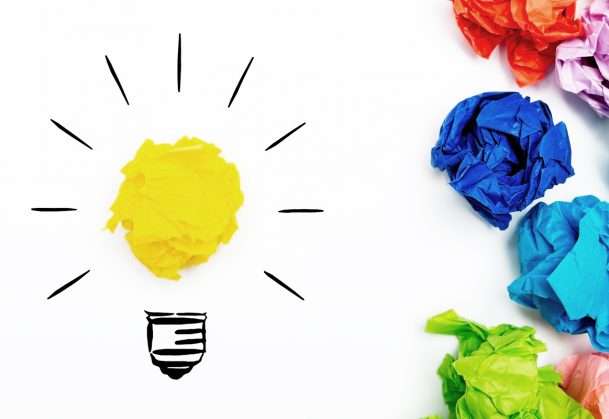Gesturing can boost children's creative thinking

Encouraging children to use gestures as they think can help them come up with more creative ideas, according to research in Psychological Science, a journal of the Association for Psychological Science.
"Our findings show that children naturally gesture when they think of novel ways to use everyday items, and the more they gesture the more ideas they come up with," say psychological scientist Elizabeth Kirk of the University of York. "When we then asked children to move their hands, children were able to come up with even more creative ideas."
Existing research has shown that gesture can help with some kinds of problem-solving. Kirk and colleague Carine Lewis of the University of Hertfordshire hypothesized that it might specifically help us come up with creative or alternative uses for everyday items.
"Gesturing may allow us to explore the properties of the items - for example, how the item could be held, its size, its shape, etc. - and doing so can trigger ideas for creative uses," Kirk explains.
In their first study, the researchers compared the creativity of children who spontaneously gestured with those who either did not or could not gesture.
A total of 78 children, ranging from 9 to 11 years old, saw a series of images depicting ordinary household items, including a newspaper, a tin can, and a kettle. The researchers asked the children to look at each image and list as many novel uses as they could think of. The children could take as much time as they needed; when they paused, the researchers prompted them by saying "What else could you do with it?" A subset of participants completed the task twice - on one version of the task, they wore mittens that limited their ability to gesture.
The researchers transcribed and coded each session, measuring the number of valid novel uses generated by each participant, as well as the originality of those responses and the diversity of categories that the responses fell under.
The data showed that children spontaneously gestured and that greater gesturing was associated with a greater number of creative ideas.
Restricting children's ability to gesture did not impact their ability to come up with creative uses for the objects: Children who were free to gesture produced about the same number of ideas as those who wore the mittens and could not gesture. This may be because children still had many other idea-generating strategies at their disposal when their hands were restricted.
These findings led Kirk and Lewis to wonder: Could encouraging children to gesture actually boost creativity?
In a second experiment, 54 children, ranging from 8 to 11 years old, completed the same alternative uses task. In some cases, children gestured normally; in other cases, the researchers instructed the children to "use your hands to show me how you could use the object in different ways."
The data indicated that the encouragement worked: Children who gestured normally produced 13 gestures, on average, while those who were specifically prompted to gesture produced about 53 gestures, on average.
And encouraging gesture in this way boosted creativity: Children who were encouraged to gesture generated a greater number of novel uses for the everyday objects than did the children who were not given any special instruction.
"Our findings add to the growing body of evidence demonstrating the facilitative role of gesture in thinking and have applications to the classroom," Kirk and Lewis conclude in their paper. "Asking children to move their hands while they think can help them tap into novel ideas. Children should be encouraged to think with their hands."
More information: Psychological Science, journals.sagepub.com/doi/full/ … 177/0956797616679183

















